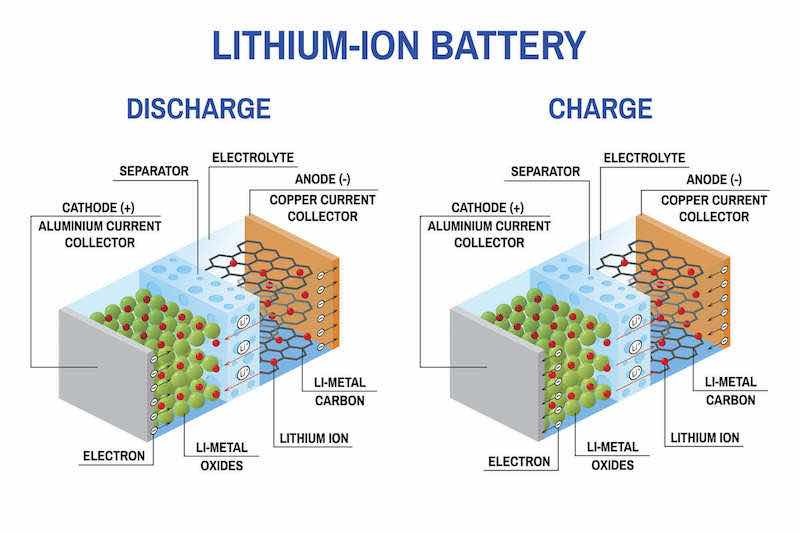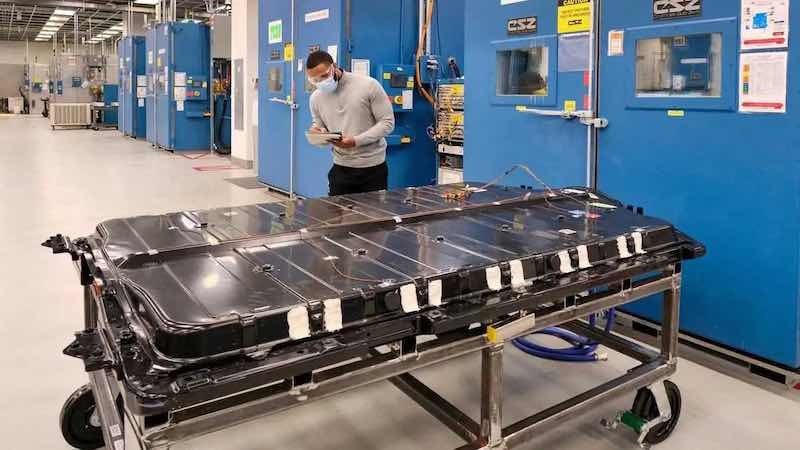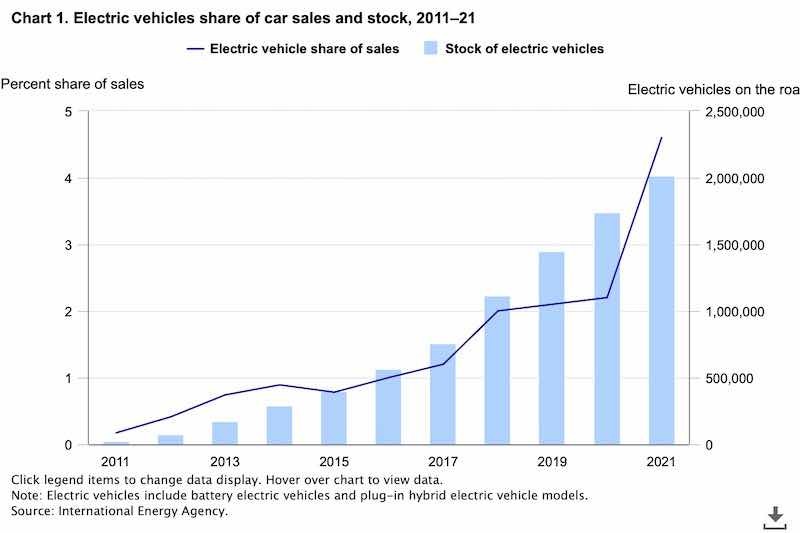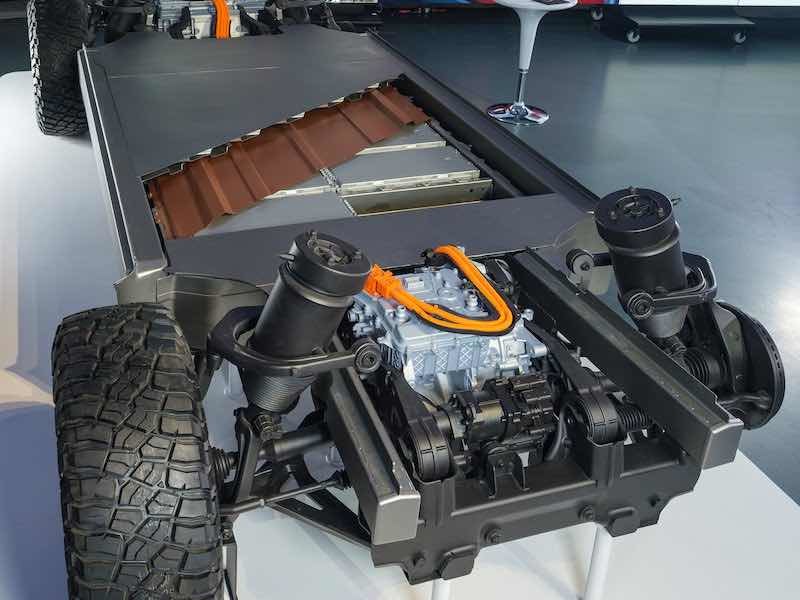If electric vehicles are the future of the automotive industry, then futuristic corrosion protection will be needed to keep the batteries that run them reliable and less expensive.
 Rich DePotoThat is the daunting task facing major automotive manufacturers who are spending hundreds of billions of dollars on new EV battery research facilities, trying to find a way to make them lighter, less costly, and more resistant to corrosion and wear.
Rich DePotoThat is the daunting task facing major automotive manufacturers who are spending hundreds of billions of dollars on new EV battery research facilities, trying to find a way to make them lighter, less costly, and more resistant to corrosion and wear.
In late 2022, the U.S. Department of Energy launched the “American Battery Material Initiative” as a dedicated effort to align federal investments and activities to accelerate the development of the full end-to-end battery supply chain, including the critical minerals and materials we need to meet production and deployment goals.
20+ New EV Battery Factories in Works
Ford Motor Company and South Korean firm SK Innovation have gone full force into manufacturing new EV batteries, announcing more than $11 billion in investments in new plants in Kentucky and Tennessee.
Additionally, Ford says it will spend close to $6 billion for a 3,600-acre campus in Tennessee called “Blue Oval City,” where it will design and build newer EV batteries.
 Almost 20 new battery plants have been announced by vehicle manufacturers that are expected to open by 2025.“Although forecasts for the rate of EV adoption over the next decade vary widely given rapid changes in both government policies and the auto manufacturing industry in recent years, many forecasts expect a strong acceleration in EV adoption,” says Javier Colato, an economist at the U.S. Bureau of Labor Statistics.
Almost 20 new battery plants have been announced by vehicle manufacturers that are expected to open by 2025.“Although forecasts for the rate of EV adoption over the next decade vary widely given rapid changes in both government policies and the auto manufacturing industry in recent years, many forecasts expect a strong acceleration in EV adoption,” says Javier Colato, an economist at the U.S. Bureau of Labor Statistics.
“S&P Global Mobility forecasts electric vehicle sales in the United States could reach 40% of total passenger car sales by 2030,” adds Lindsey Ice, who is also an economist at the BLS. “More optimistic projections foresee electric vehicle sales surpassing 50% by 2030.”
In total, almost 20 new battery plants have been announced by vehicle manufacturers that are expected to open by 2025, including:
- Ford in Northeast of Memphis, TN, in 2025
- Ford and SK Innovation in Central KY in 2025
- Ford and SK Innovation in Central KY in 2026
- General Motors and LG Chem in Lordstown, OH, in 2022
- General Motors and LG Energy Solution in Spring Hill, TN, in 2023
- General Motors and LG Energy Solution in TBD in TBD
- SK Innovation in Northeast of Atlanta, GA, in 2022
- SK Innovation in Northeast of Atlanta, GA, in 2023
- Stellantis and LG Energy Solution in TBD in 2024
- Stellantis and Samsung SDI in 2025
- Toyota in Southeast of Greensboro, NC, in 2025
- Volkswagen in Chattanooga, TN
The U.S. government has become a major partner in these projects, funding nearly $2.8 billion of the $9 billion cost to build the facilities.
But top of mind for everyone who is trying to build a longer-lasting EV battery that is less costly is reducing the amount of corrosion that occurs in the battery cells. For companies like Uyemura International, which for years has staked its claims in plating electronic components, the EV market has opened an even larger window.
‘A Solution Looking for a Problem’
 Courtesy of Misumi.Rich DePoto, Business Development Manager for Uyemura, says the company has been working on new technologies for several years that may be applicable to the EV battery market.
Courtesy of Misumi.Rich DePoto, Business Development Manager for Uyemura, says the company has been working on new technologies for several years that may be applicable to the EV battery market.
“We have had a solution looking for a problem,” DePoto says, adding that their work over the past several decades on plating titanium and palladium for the electronics sector has produced several cross-over products that could solve the corrosion issues.
“The market that we’ve always had our eyes on is electrical charging in vehicles,” DePoto says. “We built the silver portfolio for that, but discussions with automotive inevitably turn to batteries. This is a big market, growing at an incredibly fast rate.”
That should be great news for electroplaters, anodizers, and other finishers, who have heard for a while about the imminent demise of the internal combustion engine and the possible loss of business finishing those parts.
But with any newer technology — such as EV batteries — comes newer problems to solve, and with lithium-based batteries, there can often be huge corrosion issues to address.
The Goal of Better Battery Technology
 “(Manufacturers) are constantly looking for a better battery technology,” DePoto says. “We typically get two to three calls a month from companies that want to discuss their battery technology and the problems of reliability.”
“(Manufacturers) are constantly looking for a better battery technology,” DePoto says. “We typically get two to three calls a month from companies that want to discuss their battery technology and the problems of reliability.”
With EV batteries operating in an invariably corrosive environment, battery makers are searching for anodes that can withstand those challenges and be more sustainable as well as cost-effective.
While some EV battery makers have considered graphite anodes, titanium remains the classic anode material, DePoto says. But titanium doesn’t have the conductivity that many manufacturers desire, so the challenge in the automotive industry — as well as the finishing industry — has been to increase the conductivity in a plating process.
Titanium is known to generate a strong oxide buildup, which lowers its effectiveness. That has led many in the finishing industry to conduct tests to find a metal to coat the titanium with in order to build a better anode in the battery.
Plating Platinum over Titanium
 Courtesy of Umicore.One of those solutions is plating platinum over the titanium, which has been a standard but comes with its own issues, too.
Courtesy of Umicore.One of those solutions is plating platinum over the titanium, which has been a standard but comes with its own issues, too.
“Platinum is a great choice because it has great corrosive properties, and it is one of the highest-density metal elements on the periodic table,” DePoto says. “It has not experienced the dramatic price increases that palladium and gold have, so it’s been tempered on that front.”
High density often means low porosity, although DePoto says that Uyemura’s research has not demonstrated a direct correlation between these two.
“When metals are dense, they have very good atomic structure and alignment,” he says. “That is what creates the density, and by working with that material, we end up with a highly corrosion-resistant metal, which has, in principle, the opportunity under the right conditions to have very low porosity. That means it won’t be subject to chemical attack and thus have creepage or electrolyte seepage.”
Many finishers have experience plating platinum over titanium, especially in gold solutions and in high-corrosive and acid environments. But titanium oxidizes rapidly, presenting another issue that needs to be addressed.
“The oxide builds up,” DePoto says. “The way to achieve good adhesion to titanium is by creating a high surface area; ideally, you pretreat the titanium to create micro pores, then plate the platinum into it.”
Pretreatment to Reduce Titanium Oxidation
 That is where Uyemura’s research has been focused: developing a pretreatment process that will inhibit the oxidation of titanium while creating a high surface area.
That is where Uyemura’s research has been focused: developing a pretreatment process that will inhibit the oxidation of titanium while creating a high surface area.
“We are excited at what we have, but it’s challenging to come up with titanium etchants in principle,” DePoto says. “Most of the titanium etchants available involve a booster from a galvanic reaction.”
Often, etchants for titanium need a copper layer deposit along with the titanium, which results in a galvanic boost to the treatment. The goal of Uyemura’s research team has been to solve that issue with pretreatments that induce the titanium to etch uncharacteristically, thereby creating a high surface area for mechanical adhesion.
“The challenge is on two fronts,” DePoto says. “One is to get good adhesion of platinum or another precious metal to titanium; the second is to build uniform thickness.”
But to get a reasonable atomic stacking as thickness is increased sometimes builds in stresses. And DePoto says that, without good electrolytes, there will always be a limitation as to how thick these metals can be plated. The research, meanwhile, has shown vast improvements in solving that issue.
“The goal is the most porosity free or with the least amount of stress and brittleness, and we are uniquely ready for this,” DePoto says.
Improved Partnerships with Manufacturers
 Companies like Uyemura are intensifying their discussions with automotive OEMs and EV battery makers to let them know what products, such as newer pretreatments, can help them achieve; many are working in their own silos to address these issues.
Companies like Uyemura are intensifying their discussions with automotive OEMs and EV battery makers to let them know what products, such as newer pretreatments, can help them achieve; many are working in their own silos to address these issues.
But DePoto says that improved partnerships with those manufacturers over the years have allowed faster communication — and better collaboration — to get the finishing chemistries approved more quickly and into the hands of finishers who can use them on parts.
“It’s an absolute race to a short finish line,” DePoto says. “The first to effectively market the technology and integrate it with existing process lines will benefit greatly.”
Visit https://www.uyemura.com



































